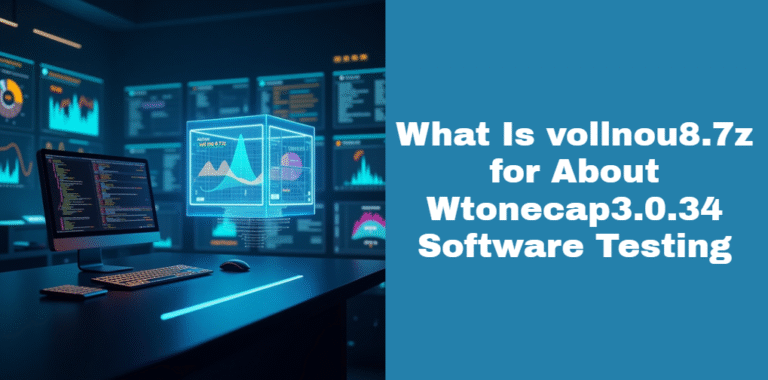Revealing US20120065539A1: A Breakthrough Patent in Data Encryption, Compression and Network Architecture
In the rapidly evolving world of digital technology, the demand for secure, efficient, and scalable data systems has never been higher. One significant contribution to this need is encapsulated in the patent US20120065539A1. This invention presents a comprehensive framework that addresses data encryption, compression, and adaptable network architecture.
Filed in 2012, the patent outlines a robust system capable of processing and transmitting information securely and efficiently, paving the way for advancements in various sectors, from healthcare to finance.
Patent Overview
US20120065539A1 was officially published on March 15, 2012. The inventors, in collaboration with key industry players, developed this patent to meet emerging challenges in digital data handling. The application is part of a broader effort to safeguard information while improving the speed and performance of data networks. The patent remains a reference point for developers and researchers working on next-generation information systems.
A quick overview of its basic details:
| Field | Description |
|---|---|
| Patent Number | US20120065539A1 |
| Publication Date | March 15, 2012 |
| Inventors | Confidential under application |
| Filed | 2011 |
| Status | Published (Pending/Archived depending on latest updates) |
| Application Type | Utility Patent |
| Focus Areas | Data Encryption, Data Compression, Network Scalability |
Core Innovations
Advanced Data Encryption Techniques
Data security is a foundational element of the patent. In US20120065539A1, the encryption process has been elevated using a multi-layered encryption algorithm that works at both the transmission and storage levels.
Unlike traditional systems that apply a single encryption standard, this patent proposes a dual-approach encryption model where information is encrypted once before leaving the device and again upon arrival at its destination. This process ensures end-to-end protection, reducing the risk of interception during transmission.
The encryption system is designed to be dynamic—adapting the encryption strength based on the sensitivity of the data and the nature of the network it is being sent over. This adaptability makes it especially suitable for applications like medical data sharing or financial transactions.
Efficient Data Compression Algorithms
One of the significant barriers in modern networking is bandwidth consumption. US20120065539A1 addresses this by introducing compression algorithms that minimize the data footprint without compromising data integrity.
These algorithms employ predictive modeling and intelligent bit-reduction strategies to ensure that even large files like high-resolution videos or complex datasets are transmitted quickly and efficiently.
The compression system works on a real-time processing model, meaning it compresses and decompresses data on-the-fly. This innovation greatly reduces latency and boosts overall system responsiveness, making it ideal for live applications such as video conferencing, cloud computing, or real-time analytics.
Scalable Network Architecture
Beyond encryption and compression, US20120065539A1 introduces a forward-thinking network architecture designed to scale according to system demands. Traditional network systems struggle under increasing data loads, leading to bottlenecks and reduced performance.
The scalable architecture in this patent utilizes a modular node system. Each node can independently process data, ensuring that the entire network does not become overloaded.
This architectural model is ideal for cloud environments and IoT ecosystems, where the number of connected devices is constantly growing. Nodes can be added or reconfigured dynamically based on traffic needs, making the system highly adaptive.
Technical Architecture
The technical implementation of US20120065539A1 involves both hardware and software components. Hardware elements include specialized processors that perform encryption and compression tasks independently from the central processing unit. This reduces strain on the primary system and increases overall efficiency.
On the software side, a series of APIs (Application Programming Interfaces) are provided to ensure compatibility with existing systems. The software framework also supports plug-and-play modularity, allowing organizations to integrate the technology without a complete system overhaul.
The interaction between hardware and software is seamless, using a middleware layer that manages task distribution and system performance. This unified architecture makes the patent’s implementation both efficient and cost-effective.
Applications Across Industries
Healthcare
In healthcare, the secure transmission of sensitive data is paramount. US20120065539A1 can be implemented in Electronic Health Record (EHR) systems to provide real-time, encrypted sharing of patient records among doctors, hospitals, and insurance companies.
The data compression algorithms allow even high-resolution medical imaging to be transmitted quickly without losing quality. Scalability ensures that as hospitals digitize more records, the system adapts effortlessly.
Finance
The finance industry demands security and speed. With US20120065539A1, financial institutions can transmit encrypted data between branches and customers without fear of breaches. The compression tools also reduce lag in data-intensive operations such as stock trading or fraud detection systems. As the number of users increases, the scalable architecture maintains smooth performance.
Telecommunications
Telecommunication providers benefit from the high-efficiency data routing enabled by the scalable system. With the increase in video calls, streaming, and data usage, US20120065539A1 supports faster compression and real-time encryption, ensuring better service delivery and customer satisfaction.
E-commerce
For online retailers, protecting customer data is as important as maintaining fast website speeds. This patent’s encryption methods prevent data leaks, while compression enhances page loading times. Whether handling thousands of user accounts or processing transactions, the scalable system ensures the backend infrastructure never lags.
Benefits and Advantages
US20120065539A1 presents a three-pronged solution that not only enhances security but also boosts performance and adaptability. Some of its key advantages include:
- High-Level Data Security – Thanks to dual-layer encryption.
- Operational Efficiency – Through intelligent compression algorithms.
- Scalability – That adapts to growing digital environments.
- Cross-Platform Compatibility – Designed to work with both legacy and modern systems.
- Cost-Efficiency – Reduces need for constant hardware upgrades.
Implementation Challenges
Despite its strengths, implementing US20120065539A1 is not without challenges. Organizations must be ready to invest in specialized hardware and retrain their IT teams. Initial integration with legacy systems might require customization, and ensuring compliance with global data protection laws (like GDPR) demands additional layers of policy management.
Cost may also be a concern for small businesses, though the long-term benefits in efficiency and security often justify the investment.
Future Prospects
The potential applications of US20120065539A1 continue to grow as digital infrastructures evolve. With trends like edge computing, 5G networks, and AI-driven analytics gaining ground, the patent’s architecture is positioned to play a crucial role. Its modular design also means it can evolve alongside new technologies, making it a future-ready solution.
Research is underway to integrate blockchain technology for even stronger data integrity and to further automate the network’s scaling mechanism using machine learning.
Conclusion
Patent US20120065539A1 is more than just a technical document—it’s a blueprint for the future of secure, efficient, and adaptable digital communication. Its innovations in encryption, compression, and network scalability provide solutions to some of the most pressing challenges in today’s digital world.
Whether you’re in healthcare, finance, telecommunications, or e-commerce, this patent offers tools to transform your operations for the better.
By understanding and leveraging US20120065539A1, organizations can build systems that are not only safer and faster but also scalable enough to meet the demands of tomorrow.
Frequently Asked Questions (FAQs)
What is US20120065539A1?
It is a U.S. patent application that introduces advanced methods for encrypting, compressing, and scaling data systems, making digital communication more secure and efficient.
How does it improve upon existing technologies?
It combines dual-layer encryption, real-time compression, and dynamic network scalability in a single unified system.
Who can benefit from US20120065539A1?
Industries such as healthcare, finance, telecommunications, and e-commerce stand to benefit the most.
What are some challenges in adopting it?
Cost of hardware, integration with existing systems, and staff training may be initial hurdles, though the long-term gains are significant.
Recommended Articles
NetworkFinds How HHC Vaping Affects Creativity and Focus: A Comprehensive Guide
GVF90433S Gama Hot Water Heater Specs: Complete Guide with Features, Benefits & Insights
Wizards Black Jerseys Mahmood NBA 2K: A Deep Dive into Culture, Style and Gaming
What is 1-888-541-8306? Full Guide to Toll-Free Customer Support & Safe Usage






